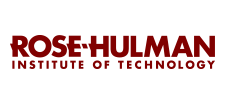Date of Award
Summer 8-2015
Document Type
Thesis
Degree Name
Master of Science in Optical Engineering
Department
Department of Physics and Optical Engineering
First Advisor
Azad Siamakoun
Second Advisor
Michael McInerney
Third Advisor
Sergio Granieri
Abstract
Metamaterials are artificial metallic structures having, possibly, simultaneously negative permittivity and negative permeability which is called a double negative medium. To achieve a visible light range of the metamaterial, the unit cell of the metamaterial units should be 10-200nm. It is a much bigger structure than a size of normal atom. Still, the resolution of fabrication, which is difficult part, should typically be a few nanometers to achieve a nano-level unit. We study Ag thin-film as a convenient candidate for metamaterial over a specific frequency range. Because, the thin film metal is composed of disk shape island structures itself. These represent be each metamaterial unit cell. To model the metamaterial model for each thickness of silver, we use surface plasmon-polaritons which is called SPPs. It can coupled Prism and metal to check where is plasmon resonance angle. This specific angle and the reflectivity of a thin silver film are function of metal and dielectric of thickness and metal’s permittivity and dielectric function of layer. Experimental measurements of SPPs and Simon’s simulation show good agreement with the COMSOL Multiphysics metamaterial model. And we demonstrate the annealing method for a thin film metal is nice approach to change the surface plasmon resonance angle. The theory of SPPs is explained using the Drude model and Maxwell equation.
Recommended Citation
Park, Heesoo, "Study of Surface Plasmon Resonance in Metal and Alloy Nanofilms using Maxwell Description and Metamaterial Simulation in COMSOL" (2015). Graduate Theses - Physics and Optical Engineering. 6.
https://scholar.rose-hulman.edu/optics_grad_theses/6


Comments
I would like to thank my advisor, Professor Siahmakoun Azad, for the support and guidance he provided in the study of this topic while pursuing my master’s degree. It was truly an honor for me. When I was stuck on an obstacle, your insight and enthusiasm was very helpful to me. I appreciate that you have always given me courage to pursue my career. I would also like to thank Professor Joo, Professor Granieri and Professor Mclnerney. They have given me a lot of optics knowledge. And I have really enjoyed their lectures during my master’s course work. I would like to offer thanks to my friend and colleague, Benjamin Hall, for helping my college life in the United States, and for his dedication while we worked together. His honesty and insight was very helpful to me. And I have always enjoyed communication with him. Finally, I would like to thank my family and girlfriend for their support and encouragement. I could not have finished my thesis project if they did not support me.